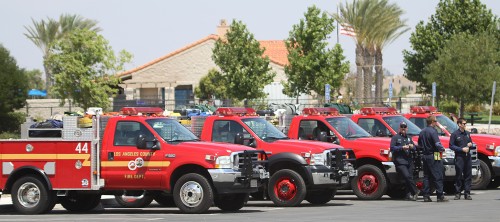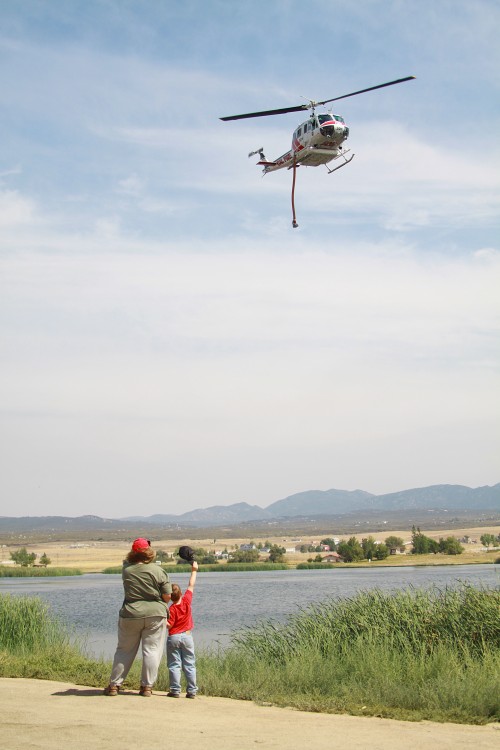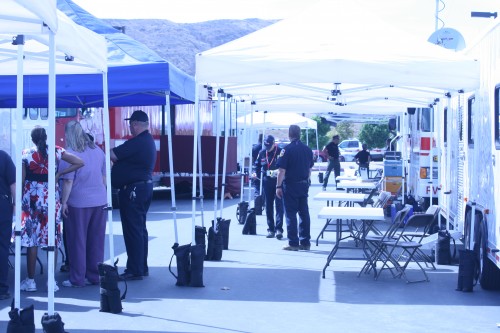
CAL FIRE officials are cautiously optimistic today about the diminishing future of the Buck Fire. Most of today the fire laid down, according to the Public Information Officer Chief Rick Vogt, a Battalion Chief with San Marcos Fire.
Both Vogt and Riverside Fire Chief John Hawkins were confident that the Buck Fire did not spread as rapidly or as far as it did on Tuesday. And when better measurements were available tonight they were proved correct. As of Wednesday evening, CAL FIRE estimates that 2,681 acres have burned and the fire has been about 40 percent contained.
CAL FIRE officials have brought in Incident Command Team 6 to manage the containment and control of the fire. Command post was established at Diamond Valley Lake today. Battalion Chief Ray Chaney of CAL FIRE, Ramona Air Attack Base, is the team’s Commander and has already surveyed the fire scene.

The team will need several days to control the fire, Vogt said. They need to establish a mile and half containment line in very rough and rugged terrain.
Tomorrow, Thursday, Aug. 16, will be an important junction for the Buck Fire, according to Vogt.
If the weather continues like today, CAL FIRE will have a good opportunity to expand containment. However, if thunder storms return (and the cause was determined to be lightning), then its future will depend on the strength and direction of the storm’s accompanying winds, according to Vogt.

The National Weather Service forecast for tomorrow in Aguanga and Hemet calls for sunny and clear and a 20 percent chance of thunderstorms returning Friday.
The topography, in which the fire is established, will also affect its behavior.
Monday, once the fire ignited, it had several features in its favor. Fuel moisture was extremely low, despite the recent, but sparse rains. The Forest Service’s Keenwild Station near Mountain Center has recorded two-thirds of an inch of rain since July 1. The long-term average rainfall for July and August is nearly 1.6 inches.
The fire started low and burned uphill with the wind behind it.
Also there are several other large fires in California including the Vallecito Lightning Complex, which is in adjacent San Diego County.
Despite competition for resources, nearly 1,000 fire personnel, 11 air tankers, 105 fire engines, of which 65 were CAL FIRE, and six helicopters have been fighting the blaze since Tuesday.











